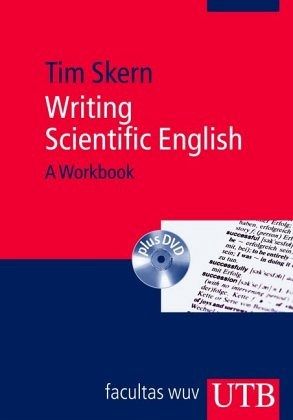Nicht lieferbar

Writing Scientific English, w. DVD-ROM
A Workbook
Versandkostenfrei!
Nicht lieferbar
Das Verfassen wissenschaftlicher Arbeiten in englischer Sprache ist heute in vielen Studienrichtungen unerlässlich. Gleichzeitig stellt es für Studierende meist eine große Herausforderung dar. Dieses Buch leitet zur richtigen Arbeitsweise und zum korrekten Sprachgebrauch an und schließt damit eine Lücke in der einschlägigen Literatur. Anhand zahlreicher Beispiele werden sowohl gelungene Texte analysiert als auch typische Fehler deutschsprachiger Studierender korrigiert.Die beiliegende DVD stellt Techniken für mündliche und schriftliche Präsentationen vor und vermittelt die Aussprache ...
Das Verfassen wissenschaftlicher Arbeiten in englischer Sprache ist heute in vielen Studienrichtungen unerlässlich. Gleichzeitig stellt es für Studierende meist eine große Herausforderung dar. Dieses Buch leitet zur richtigen Arbeitsweise und zum korrekten Sprachgebrauch an und schließt damit eine Lücke in der einschlägigen Literatur. Anhand zahlreicher Beispiele werden sowohl gelungene Texte analysiert als auch typische Fehler deutschsprachiger Studierender korrigiert.
Die beiliegende DVD stellt Techniken für mündliche und schriftliche Präsentationen vor und vermittelt die Aussprache wichtiger Begriffe.
Die beiliegende DVD stellt Techniken für mündliche und schriftliche Präsentationen vor und vermittelt die Aussprache wichtiger Begriffe.



